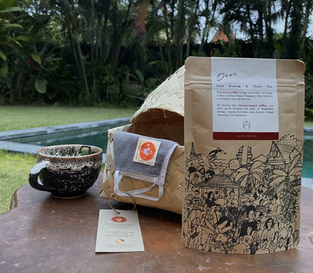Hi Amanda here from Think Team, and occasionally do and be tank!
Does the new year start to sink in, everyone? It surely does for me. I found myself continuously reflect on my past achievements and recalculate this year resolution. As I am planning for this month's regular retreat which will be about Individual Objective Key Results and Competitive Analysis, I began to really looking into on how does this actually connect to our vision and how we can stand out. Other than structurally tracking and reevaluating our goal through backcasting, as I have described in my previous blogs, our next goal is mapping our competitive position.
According Harvard Business Review (HBR), one way is tracking price-benefit positioning mapto loccate unoccupied spaces in highly competitive markets, identify opportunities, and anticipate competition's strategies. Here is a simple three steps from what I have learned working with su-re.co do-business team and some readings:
Define the Market. The goal of this step is to decide whether we need to track the entire market or only specific segment (i.e. retail or wholesales, products or brands). This determines the frames of analysis and boundaries for each maps.
Choose the price and determine the primary benefit.This is where it can get complicated because while gathering data of customers, prices, in you chosen frame of analysis, you need to identify variances of product benefits. Then, you can conduct Regression analysis that examines the relationship between a dependent variable (in this case, price) and several independent variables (product benefits) and creates a mathematical model of the price-benefit equation. This equation depicts how each benefit contributes to the differences in the prices of competing offerings while controlling for the impact of all other benefits.You may read more details on of how the read the results of the regression analysis on the HBR article.
Plot positions and draw the expected price line. The line shows how much customers are expected to pay on average to get different levels of the primary benefits.

Interesting examples of position mapping for Cellphone market: iPhone vs. Motorolla (picture above) and Motorcylce market in America: Harley Davidson vs. Japanese bran motorcycles (Honda, Suzuki and Kawasaki) are further explained in the article. For su-re.co, this analysis can implemented for our su-re.coffee and su-re.cocoa products!
After holding our monthly retreat and analyze them in positioning Maps, we aim to find ways in valuing intangible benefits to offer to our customers, anticipating shifts in the value of benefits and finding paths of least resistance. While we still learning and developing internally how can our business can best provide for you our lovely customers, proceed to check out our beautifully arranged hampers that includes tree planting as well here !!








Comentários